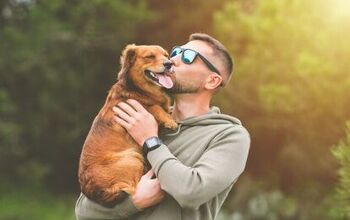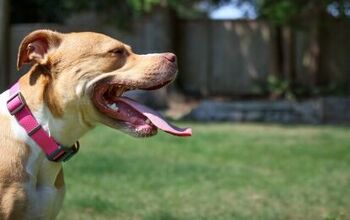Should I Be Worried if My Cat's Nose is Dry?
We often refer to our cat’s noses as adorable and irresistible, but have you ever stopped to consider what else they can tell us? Those cute “boopable” snouts are complex organs with many vital functions, including breathing, smelling, and regulating body temperature. They can also serve as a barometer of their overall health, warning us when something’s wrong. A persistently dry nose can sometimes indicate an underlying health problem. Understanding the potential causes and when to seek veterinary help is crucial for ensuring your cat is happy and healthy. This guide will explore the common reasons for a dry nose in cats and how to determine if it’s a cause for concern (as not all dry noses are). We’ll also discuss additional factors related to your cat’s nasal health and how to keep your feline friend feeling their best. Why Are Cat Noses Wet? Whether you’re a first-time cat parent or have had cats for years, you’re likely familiar with the wetness that most cats have on their noses. But why exactly are their noses wet?When you touch a healthy cat’s nose, they often feel slightly wet and cool. This wetness could result from several factors, including sweat, licking their noses, drinking water, drainage from their tear ducts, or outside environmental factors (like rain and snow). Their noses are obviously used to breathe and smell things, just like humans. However, there is one significant difference: A wet nose can help keep your cat cool on a hot day. Our kitties don’t sweat all over like we do. Instead, they sweat solely through their noses and paw pads. Luckily for your cat, that wet nose can improve their sense of smell. When scent particles come in contact with the damp surface of their nose, they stick. This allows your cat to get an even better whiff of whatever smell they have encountered. Causes of Dry Nose in Cats Your cat’s nose may be a little dry or even cracked for several reasons, ranging from everyday experiences to potentially life-threatening health complications. To identify whether your cat’s dry nose is an issue, you’ll need to watch for other symptoms of trouble. Here are a few of the most common causes of dry nose in cats and what to look out for: It’s Your Cat’s “Normal” I will list a wide variety of reasons to consider here, but first, let’s get this one out of the way. Some cats will have a dryer nose naturally, even when they are completely healthy. You know your cat best. If you have kept up with your cat’s annual vet visits, been given the all-clear, and your cat still has a dry nose, it may be the way it is. Dry Air Conditions One of the most common causes of a dry nose is the air conditions in your home. Whether you are running the central heating system excessively during the cold of winter or relying heavily on the air conditioning unit during the summer, you can unintentionally create dry air conditions in the home. While dry air doesn’t require an emergency vet visit, it is something that you should address. Dry air can cause many problems for both you and your cat, including dry skin and respiratory issues. One of the easiest ways to correct the problem is to purchase a warm or cool mist air humidifier. Close Proximity to a Heat Source Do you have a cat who enjoys sleeping on the air vents or in front of your fireplace? Your cat’s dry nose may simply be the result of the moisture drying up while basking in the heat. Given a bit of time, the moisture will return on its own. If you suspect this is the case, keep an eye on your cat to ensure everything returns to normal and no other underlying causes are at play. Dehydration Cats are notoriously bad for not drinking enough water, resulting in many living in various states of dehydration. If your cat isn’t taking in as much water as they need, they may not have the moisture to sweat as much, resulting in a dry nose. Unaddressed, this could lead to severe consequences, including organ failure, heat stroke, cardiac problems, or neurological damage. Additional signs of dehydration to watch out for include: Sticky, pale gums Sunken eyesLoss of appetiteDark colored urine ConstipationLethargy Weakness or collapseThere are many potential causes of dehydration, including health conditions that require veterinary treatment. Call your vet and share your concerns. To prevent dehydration, consider feeding canned food or a mix of canned food and kibble to include more fluids in their diet. Try different water bowls, water bowl locations, or water fountains to find your cat's preferred arrangement. Our cats use the Catit Flower Fountain, which has significantly increased their water intake!Sunburned Nose Think back to the last time you suffered a sunburn. You can probably recall how dry the damaged skin felt. We often overlook the risks of the sun’s UV rays because our cats are protected by their fur. However, some body parts are still left exposed – including the nose. Other signs your cat has suffered a sunburn include swelling, redness, irritation, or skin flaking. Even if your cat doesn’t enjoy spending time outdoors in the sun, they may still be exposed to sun damage while basking in the hat indoors. You can reduce the risk of sunburn by closing the blinds to keep the sun out, installing a UV protective window film, or using a pet-friendly sunscreen on your cat’s nose.












